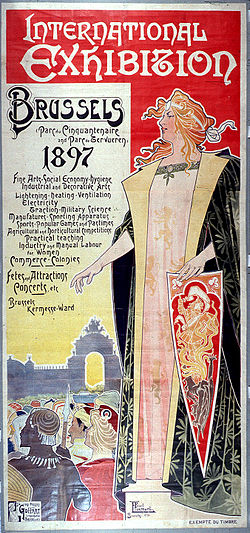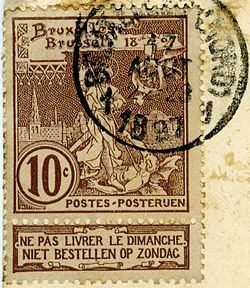| 1897 Brussels | |
|---|---|
 Exhibition poster by Art Nouveau artist Henri Privat-Livemont | |
| Overview | |
| BIE-class | Universal exposition |
| Category | Historical Expo |
| Name | Exposition internationale de Bruxelles |
| Building(s) | Palace of the Colonies |
| Area | 36 hectares (89 acres) |
| Visitors | est. 7,800,000 |
| Participant(s) | |
| Countries | 27 |
| Location | |
| Country | Belgium |
| City | Brussels |
| Venue | |
| Coordinates | 50°50′30″N4°23′19.4″E / 50.84167°N 4.388722°E |
| Timeline | |
| Opening | 10 May 1897 |
| Closure | 8 November 1897 |
| Universal expositions | |
| Previous | World's Columbian Exposition in Chicago |
| Next | Exposition Universelle (1900) in Paris |
The Brussels International Exposition (French : Exposition internationale de Bruxelles; Dutch : Wereldtentoonstelling van Brussel) of 1897 was a world's fair held in Brussels, Belgium, from 10 May 1897 through 8 November 1897. There were 27 participating countries, and an estimated attendance of 7.8 million people.
Contents
- Location
- Colonial exhibit
- Art Nouveau
- Vieux-Bruxelles
- Participating countries
- Commemoration
- See also
- References
- Citations
- Bibliography
- External links
The main venues of the fair were the Parc du Cinquantenaire/Jubelpark, as well as a colonial section in the suburb of Tervuren, showcasing King Leopold II's personal property: the Congo Free State. [1] [2] The two exposition sites were linked by a purpose-built tramway.








